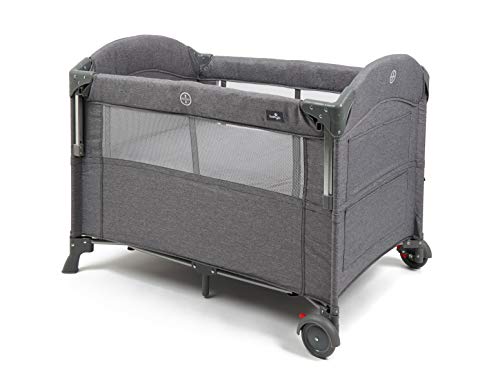
Cot For Sale
FollowOverview
-
Founded Date July 24, 1971
-
Sectors Banking
Company Description
4 Dirty Little Secrets About Baby Cots And The Baby Cots Industry
The Essential Guide to Baby Cots in the UK
Choosing the best cot for a newborn can be a difficult job for brand-new parents. With various options offered in the UK market, comprehending the features, security standards, and types of baby cots is essential. This short article aims to supply a helpful introduction of the different baby cots offered, their benefits, and considerations for parents in the UK.

Kinds Of Baby Cots
There are numerous types of baby cots available in the UK, each designed to meet various requirements and preferences. The most typical types consist of:
-
Standard Cots: These are conventional baby cots that supply a safe sleeping environment for newborns and babies. They usually feature adjustable bed mattress heights to match the baby’s development.
-
Convertible Cots: Also called 3-in-1 or 4-in-1 cots, these versatile options can change from a cot to a toddler bed and even into a full-size bed. They are developed for prolonged usage, making them a cost-efficient option.
-
Moses Baskets: Ideal for the early months, Moses baskets are lightweight and portable, making them simple to move the home. They normally include a removable cover and a soft mattress.

-
Travel Cots: These cots are collapsible and compact, particularly developed for moms and dads on the go. They feature a luggage for easy transport and are perfect for pajama parties or vacation trips.
-
Co-Sleepers: These cots are designed to connect to the parent’s bed, enabling easy access to the baby throughout the night while guaranteeing the youngster has their own safe sleeping area.
Table 1: Comparison of Baby Cot Types
| Kind of Cot | Age Range | Mobility | Durability | Cost Range |
|---|---|---|---|---|
| Standard Cot | Birth to 2 years | Low | Moderate | ₤ 120 – ₤ 300 |
| Convertible Cot | Birth to 5+ years | Moderate | High | ₤ 150 – ₤ 500 |
| Moses Basket | Birth to 6 months | High | Low | ₤ 40 – ₤ 150 |
| Travel Cot | Birth to 3 years | Extremely High | Low | ₤ 50 – ₤ 200 |
| Co-Sleeper | Birth to 6 months | Moderate | Low | ₤ 100 – ₤ 300 |
Security Standards for Baby Cots in the UK
Guaranteeing the security of a baby cot is paramount. In the UK, all cots need to abide by specific guidelines to guarantee they are safe for use. The following requirements must be met:
-
British Standard BS EN 716: This standard sets requirements for the security and efficiency of kids’s cots and folding cots.
-
Product Safety: The cot needs to be made from non-toxic materials that are free from harmful chemicals.
-
No Sharp Edges: Ensure there are no sharp edges or protruding points that might harm the baby.
-
Stable Structure: The cot should have a steady base to avoid tipping, and the slats should be spaced properly to avoid the baby’s head from getting trapped.
-
Bed mattress Fit: The bed mattress should fit comfortably in the cot, without any spaces that might pose a suffocation risk.
Features to Consider When Choosing a Baby Cot
When selecting a baby cot, parents need to keep the following features in mind:
-
Adjustable Mattress Heights: Cots with adjustable heights make it easier to position and raise the baby as they grow.
-
Material Quality: Look for sustainably sourced wood or products that are both durable and safe for babies.
-
Alleviate of Assembly: Cots that are easy to put together and dismantle can conserve moms and dads time and frustration.
-
Storage Options: Some nursery cots (https://Thefusionflix.com/@cots4tots9035?page=about) feature built-in storage drawers to keep baby fundamentals organized.
-
Design and Aesthetic: Choose a cot design that fits well with the home decor while guaranteeing it is functional and safe.
Frequently Asked Questions About Baby Cots in the UK
Q1: How much should I anticipate to invest in a baby cot?
A1: Prices for baby cots in the UK can vary extensively based on type and brand name, ranging from ₤ 40 for a basic Moses basket to over ₤ 500 for high-end convertible cots.
Q2: When can my baby move to a cot from a crib?
A2: Most babies transition to a cot between 6 months and 2 years, depending on their size and movement. It’s crucial to monitor their developmental milestones.
Q3: Are second-hand cots safe to use?
A3: While second-hand cots can be safe, ensure they meet present safety standards and show no signs of wear, damage, or recalls. It’s advisable to avoid older models that might not comply with current policies.
Q4: Can I utilize a cot for a co-sleeping plan?
A4: Co-sleeper cots are developed particularly for this purpose, permitting you to keep your baby close while preserving a safe sleeping environment. Constantly adhere to co-sleeping safety suggestions.
Q5: What is the best mattress type for a baby cot?
A5: A firm and flat bed mattress is suggested for infants. Prevent soft bed mattress, as they increase the risk of suffocation. Ensure it fits snugly in the cot without any gaps.
Picking the right baby cot is an essential decision for brand-new parents in the UK. It needs cautious consideration of security policies, types of cots offered, and includes that accommodate their specific needs. By being educated, moms and dads can create a safe and comfortable sleeping environment for their newborns, guaranteeing assurance during those essential early months. Ultimately, investing time in research can lead to a notified decision that balances security, comfort, and usefulness.
